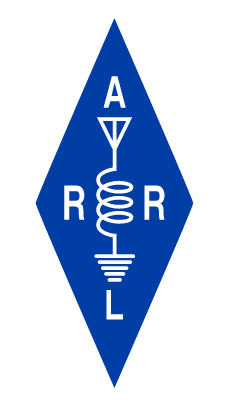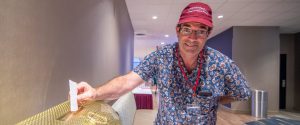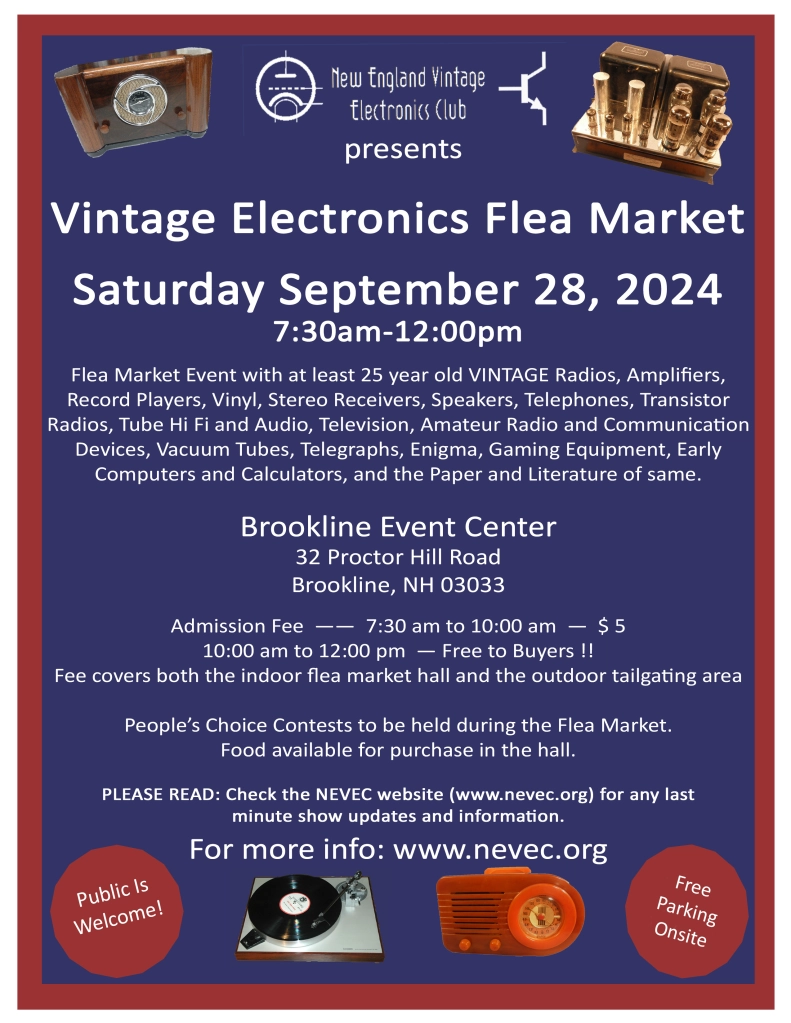
All
New England Club Newsletter Award 2024
Earlier this year, during one of the regular HamXposition meetings, Bruce, K1BG, and I were talking about doing some sort of club-centric meetings From that discussion came the Clubs forum which occurred Friday at the 2024 HamXpo.
Most of us know that clubs are the backbone of a healthy and active ham radio community. An active club most often has a newsletter that members get every month informing them of club activities and ham radio events. From this, we created the Club Newsletter Award.
Any club in New England could enter and was encouraged to do so. Newsletters would be ranked on design, layout, and information. The judge would be someone outside of New England. The top three newsletters would then be able to post the appropriate logo on their newsletters for the next year. The newsletter had to be from the second quarter of 2024 and submitted by July 5th.
The top 3 club newsletters would then NOT be able to submit again the following year, giving other clubs a chance to win the award.
I would like to thank the following clubs for submitting their newsletter this year:
| Club | Newsletter | State |
| Algonquin Amateur Radio Club | QRZ | MA |
| Androscoggin Amateur Radio Club | the A.C.O.R.N. | ME |
| Billerica Amateur Radio Society | BARS | MA |
| Blackstone Valley Amateur Radio Club | Messenger | RI |
| Candlewood Amateur Radio Association | CARA Capers | CT |
| Central NH Amateur Radio Club | Communicator | NH |
| Franklin County Amateur Radio Club | The Communicator | MA |
| Hampden County Radio Association | Zero Beat | MA |
| Housatonic Amateur Radio Club | Direct Currents | CT |
| K1USN Radio Club | K1USN HAPPENINGS | MA |
| Meriden Amateur Radio Club | KEYKLIX | CT |
| Merrymeeting Amateur Radio Association | SQUELCH TALES | ME |
| Minuteman Repeater Association | The Minuteman | MA |
| Wellesley Amateur Radio Society | The Spark Gap | MA |
From this list, I’d like to congratulate the following clubs:
#3 – Blackstone Valley Amateur Radio Club from Rhode Island
#2 – Billerica Amateur Radio Society from eastern MA
#1 – Hampden County Radio Association from western MA

I would like to thank Bob, WA3PZO, our outside New England judge and Nels, K1UR, for his award design.
We’re going to do this again next year. I hope you will urge your club to submit your club’s newsletter.
73,
Larry, W1AST
[The winners were announced in the Club Forum on August 23, 2024 at the Northeast HamXposition.]
MessengerCurrent (1)
BARC May_2024_final
HCRA may24
Candidates Named for ARRL Director and Vice Director Elections
From ARRL News:
08/19/2024
ARRL® The National Association for Amateur Radio® has announced that the candidates for the 2024 ARRL Division elections are now official. ARRL members will choose between two candidates for Director in the Hudson, New England, and Northwestern Divisions. The sole candidates in the Central and Roanoke Divisions for both Director and Vice Director are unopposed. The Vice Director incumbents in the Hudson, New England, and Northwestern Divisions are also unopposed.
Declared Elected without Opposition
In the Central Division, candidate and current Vice Director Brent Walls, N9BA, will be the next Director having served as Vice Director since 2021, and candidate Josh Long, W9HT, will be the next Vice Director, both candidates running unopposed.
In the Hudson Division, Vice Director David Galletly, KM2O, who has held the seat since 2024.
In the New England Division, Vice Director Phil Temples, K9HI, who has served in the role since 2020.
In the Northwestern Division, Vice Director Michael Sterba, KG7HQ, who has served in the role since 2024.
In the Roanoke Division, Director Jim Boehner, N2ZZ, who was elected back to the board in 2022, and Vice Director Bill Morine, N2COP, who has held the seat since 2016.
Contested Seats
In the Hudson Division, Director Ed Wilson, N2XDD, will face challenger John Crovelli, W2GD for the seat.
In the New England Division, Director Fred Kemmerer, AB1OC, will face challenger Tom Frenaye, K1KI, who has previously held the positions of Director and Vice President.
In the Northwestern Division, Director Mark Tharp, KB7HDX, will run against Dan Marler, K7REX, who is currently a Section Manager.
Balloting for contested seats will take place this fall. Votes will be counted, and successful candidates announced, in November. Candidates declared elected will assume their roles for terms beginning January 1, 2025.
ARRL is governed by its Board of Directors. Elections are held for five of the 15 ARRL Divisions each year, for terms of 3 years.
Fox Boxes Deployed in Wallingford CT, August 18, 2024
Rob Cichon, K1RCT, writes on the ctfoxhunter mailing list:
At 09:30 one to four Fox Boxes will be switched on. They’ll be switched off at 11:00 or so. One or up to four frequencies will be used.
145.7, 700mW Beacon activated by DTMF-1
145.605, 1W Beacon
145.3, 12mW Beacon
145.2, 1W Beacon (new batteries)
The Fox will listen on our Repeater 147.36 (+600, 162.2) and 144.97 simplex. Did I mention it will be in Wallingford? APRS users may be able to ascertain a clue. Maybe not.
ARRL Urges Protecting the Amateur Radio 902-928 MHz Band
From ARRL News:
08/15/2024—The Federal Communications Commission (FCC) accepted for public comment a Petition for Rulemaking filed by NextNav Inc., a licensee in the 900-MHz Location and Monitoring Service (LMS), to completely reconfigure the 902-928 MHz band and replace the LMS with high-powered 5G cellular and related location services.
The FCC Notice requested comment on the effects that NextNav’s proposals would have on amateur radio operations in the band. ARRL® The National Association for Amateur Radio® is preparing comments urging protection of existing and future amateur uses in this band and urges all amateurs to file their own comments describing their activities in this band and the expected effect of the proposed changes. Click here for a guide to filing comments.
NextNav currently holds licenses in the 900-MHz band that authorize it to provide services limited to determining the location and status of mobile radio units. NextNav ties its request to provide high-power broadband, cellular and location services to the vulnerabilities of the current satellite-based GPS system and argues that implementation of its proposal would complement GPS by providing an alternative nationwide terrestrial location system in addition to cellular and broadband services. Under its proposal, NextNav would be designated the sole nationwide licensee for this spectrum in exchange for its more limited licenses.
The new nationwide license would authorize NextNav to provide much higher-powered traditional broadband and 5G cellular services as well as the related location service occupying 15 of the total 26 megahertz available in the band. The reconfiguration proposed by NextNav would create a 5-megahertz-wide uplink subband at 902-907 MHz paired with a 10-megahertz downlink subband at 918-928 MHz. The 5-megahertz uplink subband would be limited to use by mobiles with a maximum of 3 watts ERP. On the 10-megahertz downlink subband, up to 2000 watts ERP would be permitted in rural areas and 1000 watts ERP in urban and suburban areas, radiating from tower structures that could reach 1000 or more feet above average terrain. These configurations reflect the FCC’s rules for standard cellular configurations that have been adopted to govern a number of other bands used for similar 5G and like services.
Although uses by the Amateur Radio Service in this band are secondary to LMS, NextNav is proposing substantial technical and use changes that would completely alter the foundation upon which the current rules and spectrum sharing arrangements rely and undercut shared use of the band by amateurs as well as a variety of other users. In addition, NextNav proposes deletion of a specific interference provision in the Commission’s rules that was adopted to encourage and protect continued sharing with amateurs and other secondary users.
NextNav, in its petition, argues without evidence that the changes that it proposes to the 902-928 MHz band “will not impede amateur operations.” In an 8-page description of NextNav’s proposal released by the FCC’s Wireless Telecommunications Bureau, the FCC staff asks a series of questions that would clarify the proposal and help the Commission ascertain the likely effect of the proposed changes on existing users if the requested changes were adopted. Comment was specifically requested on the extent of amateur operations in the band, the potential impact of the proposed changes, any other spectrum options that may exist, and the costs for relocations if other options exist.
ARRL is preparing comments urging protection of existing and future amateur uses in this band. ARRL urges all amateurs to study the proposal and file their own comments describing their activities in this band and the expected effect of the proposed changes. The filing deadline is September 5, 2024. Replies to comments are due by September 20, 2024. Click here for a guide to filing comments.
Barnstable Club (BARC) Tests ARDEN Mesh Network
On August 12, BARC members Lem, W1LEM, Bruce, WA3SWJ and Rob, K1UI climbed the fire tower at the Cape Cod, MA W1MA repeater site and deployed several mesh network antennas and transceivers. The recently constructed BARC tower trailer was also towed to Al, WW1RF’s QTH and another transceiver attached at the top of the trailer tower, raised to nearly its full height. Another transceiver had previously been deployed at the QTH of Barry, KB1TLR in Brewster, more than 5 miles from the fire tower. Bandwidths in excess of more than 100 MB/sec were achieved using a high gain antenna on the fire tower and an omnidirectional antenna in Brewster.
The goal of the exercise was to evaluate the signal strength and bandwidth achievable from the fire tower to various sites on Cape Cod. The exercise was part of an effort to design a Cape-wide ARDEN network to back up connectivity for digital repeaters and also to create an ARES network of fixed and mobile sites for emergency deployment.
Additional downlinks will also create opportunities for repeater control, remote site monitoring and on-site video during emergencies.
ARRL VEC Accreditation Renewals
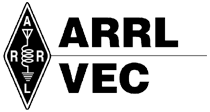 A number of individuals have expressed concerned over the recent IT issues that have prevented them from obtaining renewed ARRL VEC credentials. ARRL VEC Manager Maria Somma, AB1FM, addresses those concerns:
A number of individuals have expressed concerned over the recent IT issues that have prevented them from obtaining renewed ARRL VEC credentials. ARRL VEC Manager Maria Somma, AB1FM, addresses those concerns:
Thank you for emailing the ARRL VEC.
ARRL previously reported that we are responding to a serious incident that occurred on May 12, 2024, involving access to our network and headquarters-based systems. Several services have been affected, including those administered by the ARRL Volunteer Examiner Coordinator (ARRL VEC).
A comprehensive update on the status of ARRL VEC services is available here.
Please continue to check our website for the most up-to-date information.
We’ve recently had our email access restored and are working our way through more than a thousand emails.
We thank you in advance for your patience, as we work our way through this unprecedented event.
We will renew your VE status and ship renewal stickers as soon as we have access to our program systems.
Meanwhile, please know that your ARRL VE accreditation is valid, and you are qualified to participate in ARRL VEC exam sessions.
We appreciate your willingness to serve the community.
Sincerely,
Maria Somma, AB1FM
ARRL VEC Manager
ARRL The National Association for Amateur Radio®
225 Main Street, Newington, CT 06111-1494 USA
Phone: 1-888-277-5289
FAX: 1-860-594-0339
Email: msomma@arrl.org
ARRL Web: www.arrl.org
Want to Help Out at the Biggest Ham Event in the Northeast?
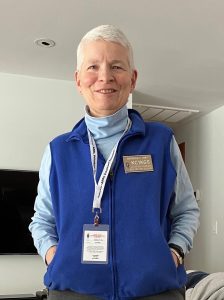 The Northeast HamXposition boasts a cadre of dedicated volunteers who make this convention possible. But we can still use more volunteers. Your smiling faces and eagerness to help makes a difference to the attendees. From selling tickets, assisting presenters, supervising the flea market, setting up the rooms, handling parking signage, supervising the flea market, and taking it all down and packing it up for next year— you make it happen!
The Northeast HamXposition boasts a cadre of dedicated volunteers who make this convention possible. But we can still use more volunteers. Your smiling faces and eagerness to help makes a difference to the attendees. From selling tickets, assisting presenters, supervising the flea market, setting up the rooms, handling parking signage, supervising the flea market, and taking it all down and packing it up for next year— you make it happen!
If you’d like to help us at the 2024 Northeast HamXposition, please register at https://registration.hamxposition.org/volunteer/ or contact our Volunteer Chair Barbara Irby, KC1KGS, at kc1kgs@hamxposition.org.
[See also: https://hamxposition.org/2024/07/23/meet-hamxposition-volunteer-chairperson-barbara-irby-kc1kgs/]HamXposition Photographer Sought
Barnstable Club Activates Chatham Light for Lighthouse Weekend
The Barnstable Amateur Radio Club (BARC) activated Chatham Light (US-158) this past weekend for the second time in as many years. Operating with two stations on the grounds of Coast Guard Station Chatham, operators made over 250 contacts , mostly on 20 meters, though conditions were generally poor. With an historic Coast Guard rescue boat and the lighthouse in the background, club members talked to many of the tourists that frequent the location. Among these were Alessandro, I2SVA, and his wife, visiting and on their way to a moonbounce operator’s meeting in New Jersey and the daughter of a ham in Maryland who wanted to work the station and did a few minutes later!
Operators for the event were Mark, WA1EXA, John, KA1CTL, Barry, KB1TLR, Lem, W1LEM, Mark, K4LFL, Don, KT1OK and Rob , K1UI.
The event marked only the second time the club used its tower trailer, constructed by Russ, K1RTA and Chris, KB1ZAM though the high winds prevented raising the tower to its full 45 foot height. Together with the WRTC triband yagi and an R-7, two Icom 7300 stations kept the ops busy much of the time.
The BARC Community Events Committee sponsors this and many other club field events throughout the year in addition to Field Day and also supports joint events with the Falmouth Amateur Radio Club such as the Mass Maritime Advanced Leadership presentation and two Falmouth road races.
